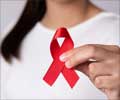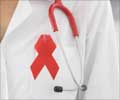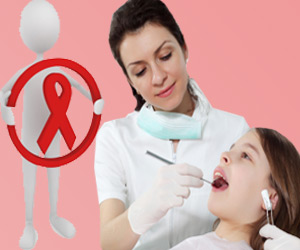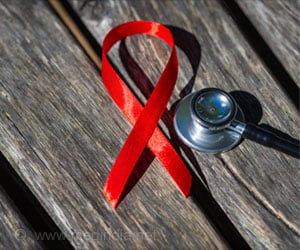Contraceptive vaginal rings that contain antiretroviral (ARV) drug called dapivirine reduces infection of HIV among women. Dapivirine rings reduce women's risk of acquiring HIV by more than half.

TOP INSIGHT
According to this study, contraceptive vaginal rings that contain antiretroviral (ARV) drug called ‘dapivirine’ can reduce the risk of HIV infection among women. Dapivirine rings may reduce women's risk of acquiring HIV by more than half.
The interim review found the rate of new HIV infections was 1.9, considerably lower than what was seen in ASPIRE. HIV incidence, which represents the number of women who are newly infected for every 100 participants in a given year, was 3.3 in the group of ASPIRE participants assigned to use the dapivirine ring and 4.5 among those in the placebo group. Using statistical modeling based on the placebo group in ASPIRE, the researchers determined the rate of new infections would have been 4.1 had women otherwise not been able to take part in HOPE and be offered the ring. The difference in incidence rates represents a 54 percent reduction in HIV risk. While encouraged by these findings, the researchers say they should be viewed with degree of caution given that HOPE has no placebo group and that the results themselves are interim, not the study's final results.
"Access to the dapivirine ring is making a difference in the lives of women in the HOPE study. While the kind of analysis we used has inherent limitations, the results indicate that HIV incidence among women in HOPE has been reduced by half," said Jared Baeten, MD, PhD, professor of global health, medicine and epidemiology at the University of Washington in Seattle, who reported the interim study results. Dr. Baeten, who is also co-principal investigator of the MTN, is leading the HOPE study with Thesla Palanee-Phillips, MMed Sci, PhD, MSc., of the Wits Reproductive Health and HIV Institute, Johannesburg, South Africa, and Nyaradzo Mgodi, MBChB, MMed, of the University of Zimbabwe College of Health Sciences in Harare.
"HIV incidence this low has not been observed in any previous HIV prevention trial involving only women. It is extremely gratifying to know that the women in HOPE are using the ring, and they are receiving real benefit," he added.
Women may enroll in HOPE even if they don't want to use the ring, yet the majority (92 percent) accepted the ring when they joined, said Dr. Baeten. Women's adherence to ring use appears to be higher in HOPE than in ASPIRE, with 89 percent of returned rings indicating the ring was used at least some of the time within the last month (based on residual drug levels) compared to 77 percent seen in ASPIRE. Current measures of adherence to the ring are not able to determine whether women are using the ring all, most or some of the month.
The primary results of the ASPIRE (A Study to Prevent Infection with a Ring for Extended Use, or MTN-020), involving 2,629 women ages 18-45 from Malawi, Uganda, South Africa and Zimbabwe, and of a second Phase III trial, The Ring Study, led by International Partnership for Microbicides (IPM), which developed the ring, were reported at CROI in 2016. Together, the two studies had enrolled more than 4,500 women from Malawi, Uganda, South Africa and Uganda, where women's HIV risk is among the highest.
The two Phase III studies found the ring was safe and reduced women's risk of acquiring HIV by about 30 percent overall (by 27 percent in ASPIRE and by 31 percent in The Ring Study). Higher levels of protection were seen in women who used the ring most regularly, and results of an exploratory analysis of ASPIRE data, later reported at AIDS 2016, suggested the level of HIV protection among those who used the ring most consistently was at least 56 percent and as high as 75 percent or potentially more with near perfect use. The dapivirine ring is made of a flexible material, and women can insert and replace it each month themselves. When placed inside the vagina, the ring slowly releases dapivirine during the time that it is worn.
IPM is seeking regulatory approval of the dapivirine ring based on results of ASPIRE and The Ring Study, and several supporting studies.
In parallel, former participants from each of the Phase III trials have been given the opportunity to use the dapivirine ring for up to a year in open-label studies, in which there is no placebo group - HOPE for former participants of ASPIRE, and DREAM for women who took part in The Ring Study - while researchers collect additional information about the ring's safety and effectiveness, and the degree to which women are using the ring (adherence). Participants in both studies must be HIV negative and not be pregnant or breast-feeding. The two studies are expected to be completed by October 2018 and have final results early 2019.
In open-label extension studies that followed Phase III trials of oral pre-exposure prophylaxis (PrEP), which involves taking an ARV tablet called Truvada every day, adherence to product use increased, and as a result, those studies were able to demonstrate the approach was more effective than in the original Phase III trials.
If preliminary results are any indication, this may also be the case with the dapivirine ring. Indeed, interim results of the DREAM study, which IPM researchers also reported today, are remarkably similar to those from HOPE, with the estimated reduction in HIV risk also about 54 percent. Both studies have also seen high uptake of and adherence to of the ring.
Dr. Baeten explained that drawing comparisons between the HOPE study population and the ASPIRE placebo group is limited by inherent differences between the two groups. HOPE study participants had completed the ASPIRE trial without becoming HIV infected, so it's possible that the level of protection in HOPE could be attributed to other behaviors, and not solely to use of the dapivirine ring. (As with ASPIRE, women taking part in HOPE receive HIV prevention counseling and services during participation.) Other characteristics differ as well, such as age - women in HOPE are on average 5 years older than they were in ASPIRE.
The researchers attempted to account for these and other differences by using a technique called bootstrap sampling to estimate the level of protection women are receiving with the ring in HOPE. First, they created a virtual comparison group, drawing only from those participants in the ASPIRE placebo group with similar characteristics to those in HOPE, and then sampled and resampled this group using a computer algorithm repeated 10,000 times to increase the confidence in their result. Through this process, the researchers determined HIV incidence would have been 4.1 had women in HOPE not had access to the ring. By comparing the expected incidence of 4.1 with the actual 1.9 rate of infection observed at the time of the interim review, they calculated a 54 percent level of effectiveness with use of the dapivirine ring.
If approved, the monthly dapivirine ring would be the first biomedical HIV prevention product developed specifically for women - and the first long-acting method. Importantly, it would represent another option, in addition to oral pre-exposure prophylaxis (PrEP). Oral PrEP, which involves taking a daily ARV tablet every day, is now approved in many countries, including in Africa, and is recommended by The World Health Organization for anyone at substantial HIV risk. PrEP is highly effective, but only with consistent use. Taking a daily tablet can be challenging for some people, while others may have concerns about the stigma associated with taking an ARV pill that is also used for treating people with HIV. Likewise, using a monthly vaginal ring may not be for everyone either.
"Women have told us that they want to have options, and that the ring is appealing to them because it is an HIV prevention option that is more like a reproductive health product than a medicine. So, the take-home message from these two open-label studies of the ring couldn't be more clear, and that is that monthly use of the dapivirine ring could provide a new way for women to reduce their risk of HIV," said Sharon L. Hillier, Ph.D., professor and vice chair of the department of obstetrics, gynecology and reproductive sciences at the University of Pittsburgh School of Medicine and principal investigator of the MTN.
Globally, more than half of all people currently living with HIV are women, and in sub-Saharan Africa, women account for nearly 60 percent of adults with HIV, with unprotected vaginal sex the primary driver of the epidemic.
The MTN is planning additional studies of the monthly dapivirine ring, including REACH (MTN-034/IPM 045), which will evaluate both the ring and oral PrEP among adolescent girls and young women, and studies in breastfeeding and pregnant women (MTN-041, MTN-042, MTN-043), so that if approved, the ring can be considered for use by these populations of women who are particularly vulnerable to HIV. Studies of next-generation dapivirine rings are also ongoing or planned in the U.S., including a three-month ring (MTN-036/IPM 047) and a ring that also contains a contraceptive (MTN-030/IPM 041, MTN-044).
Source-Eurekalert
 MEDINDIA
MEDINDIA




 Email
Email









